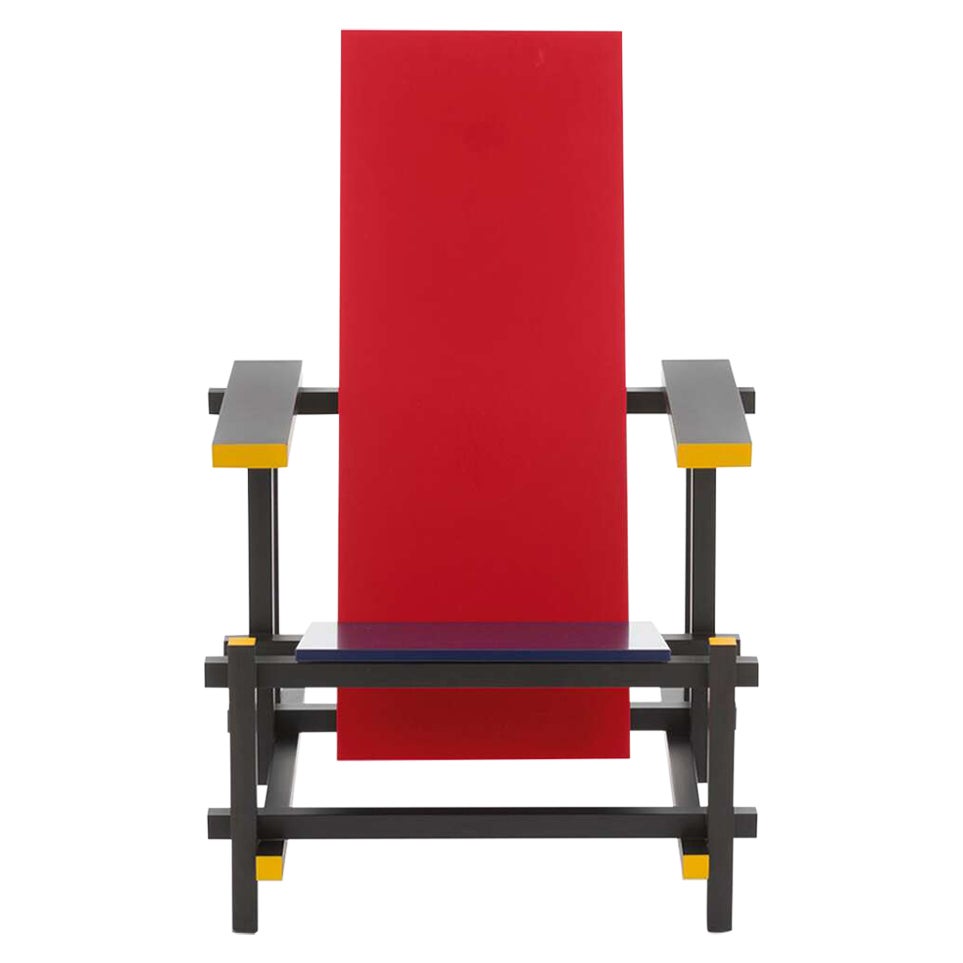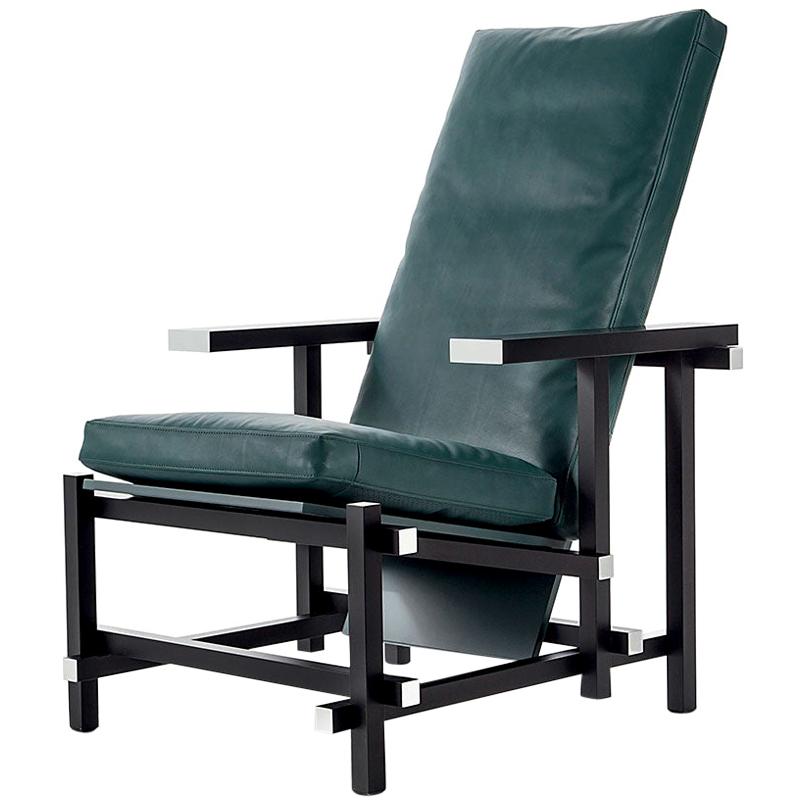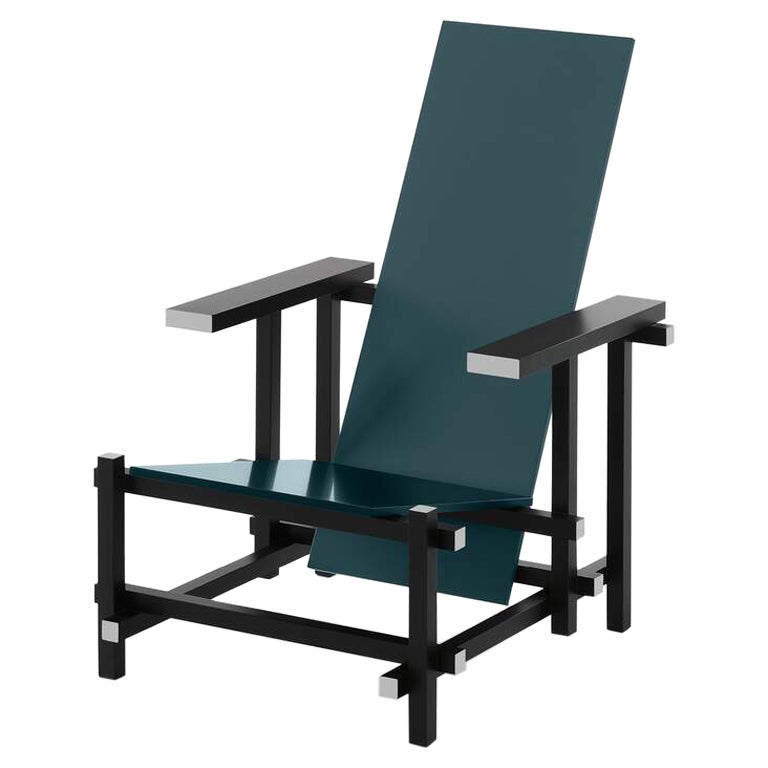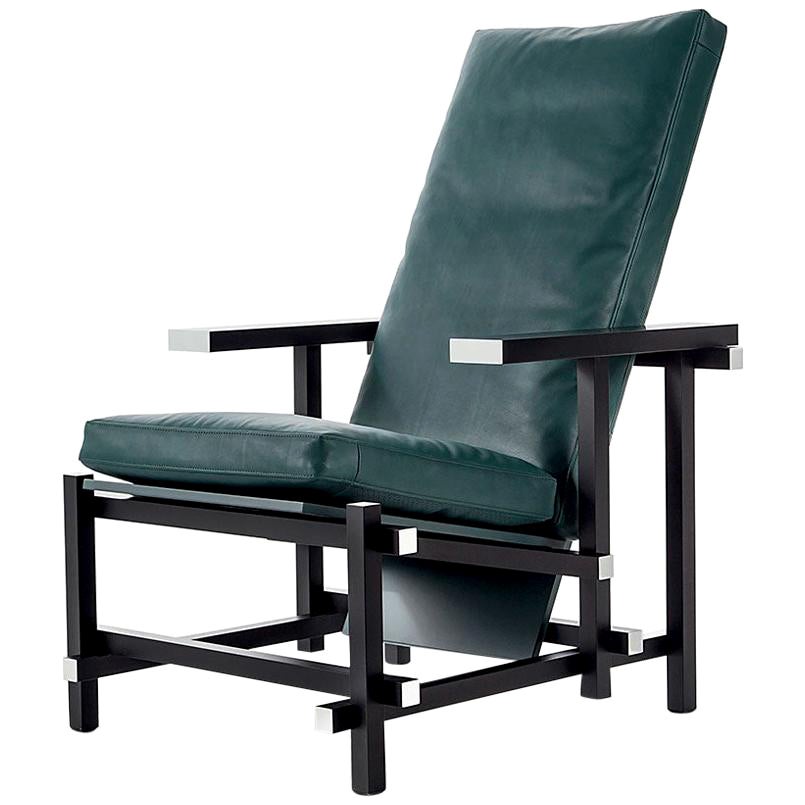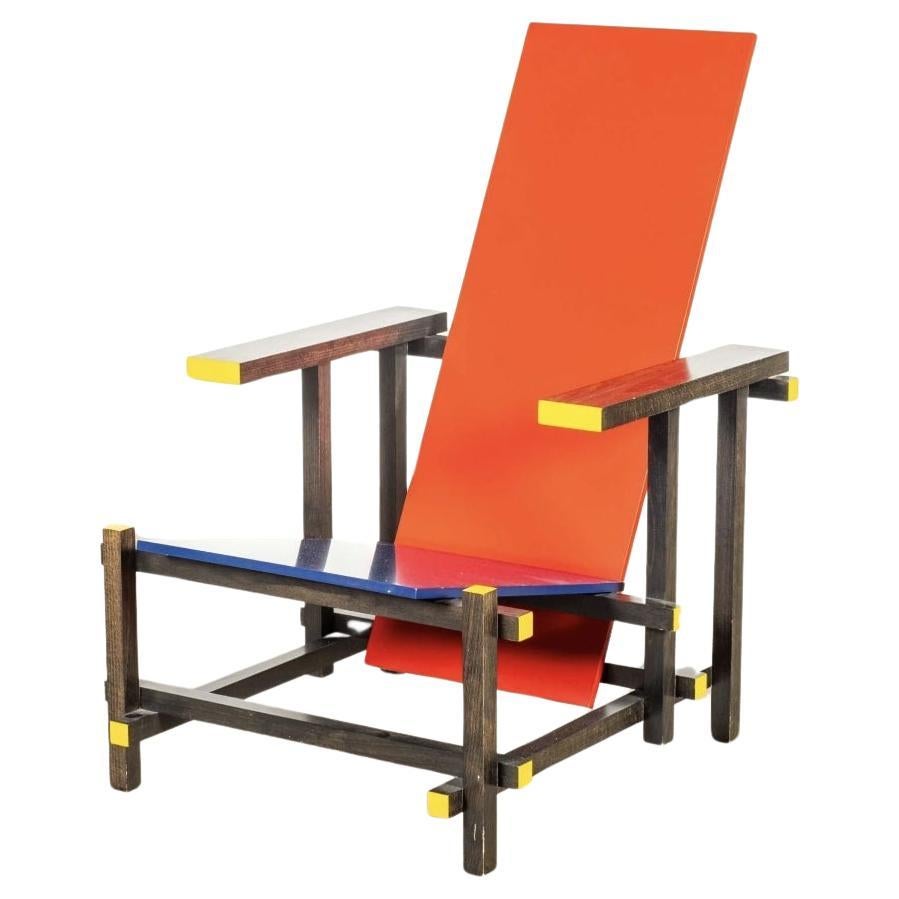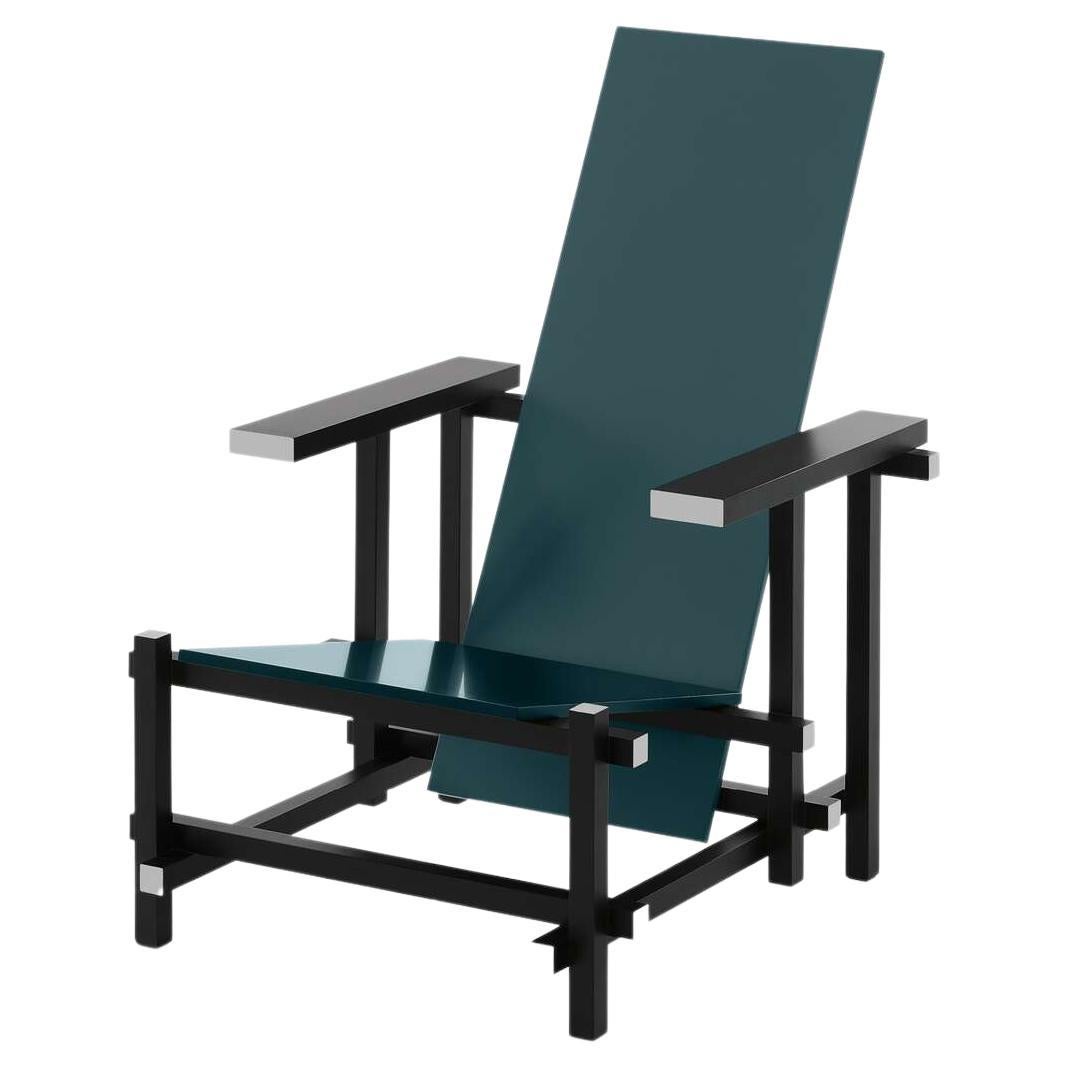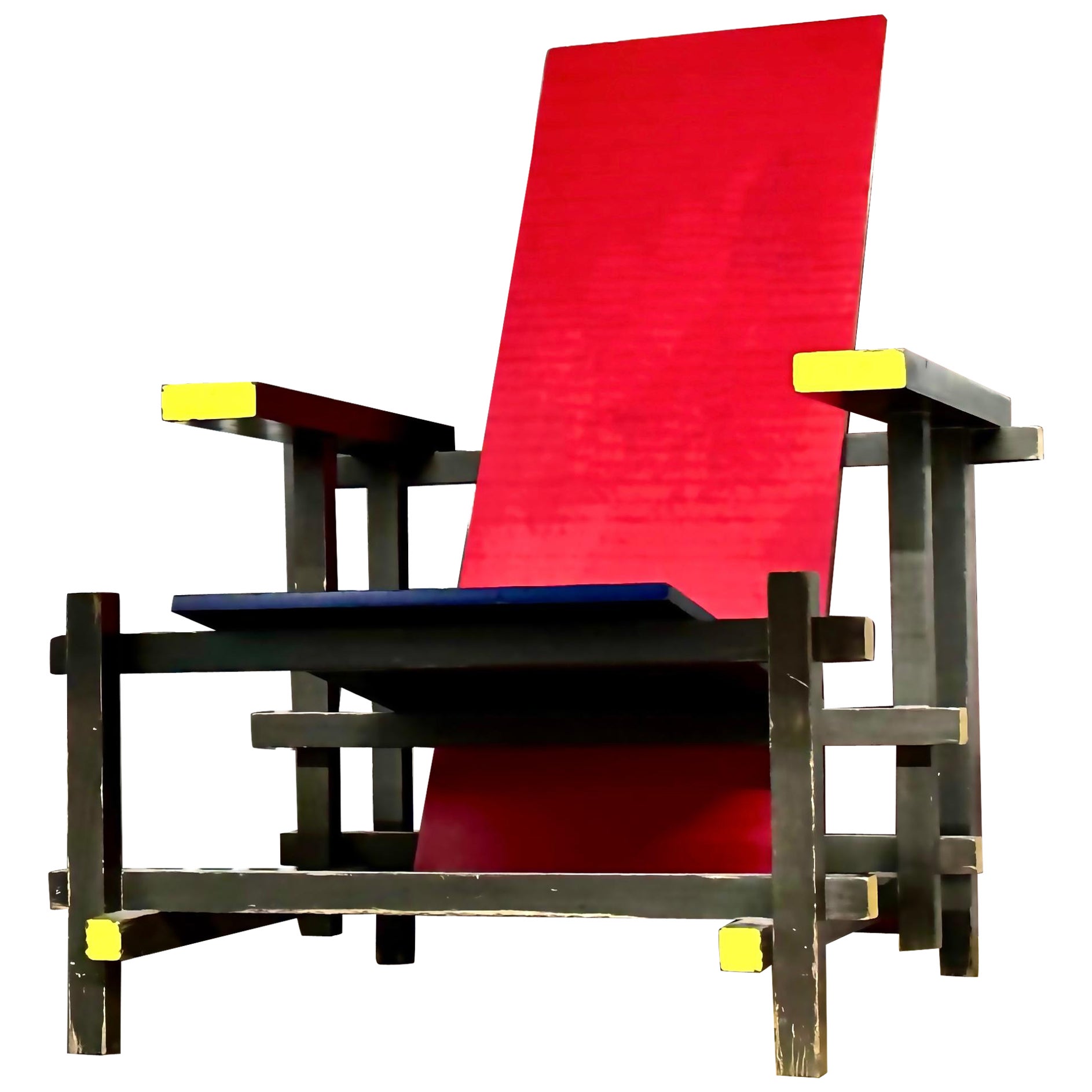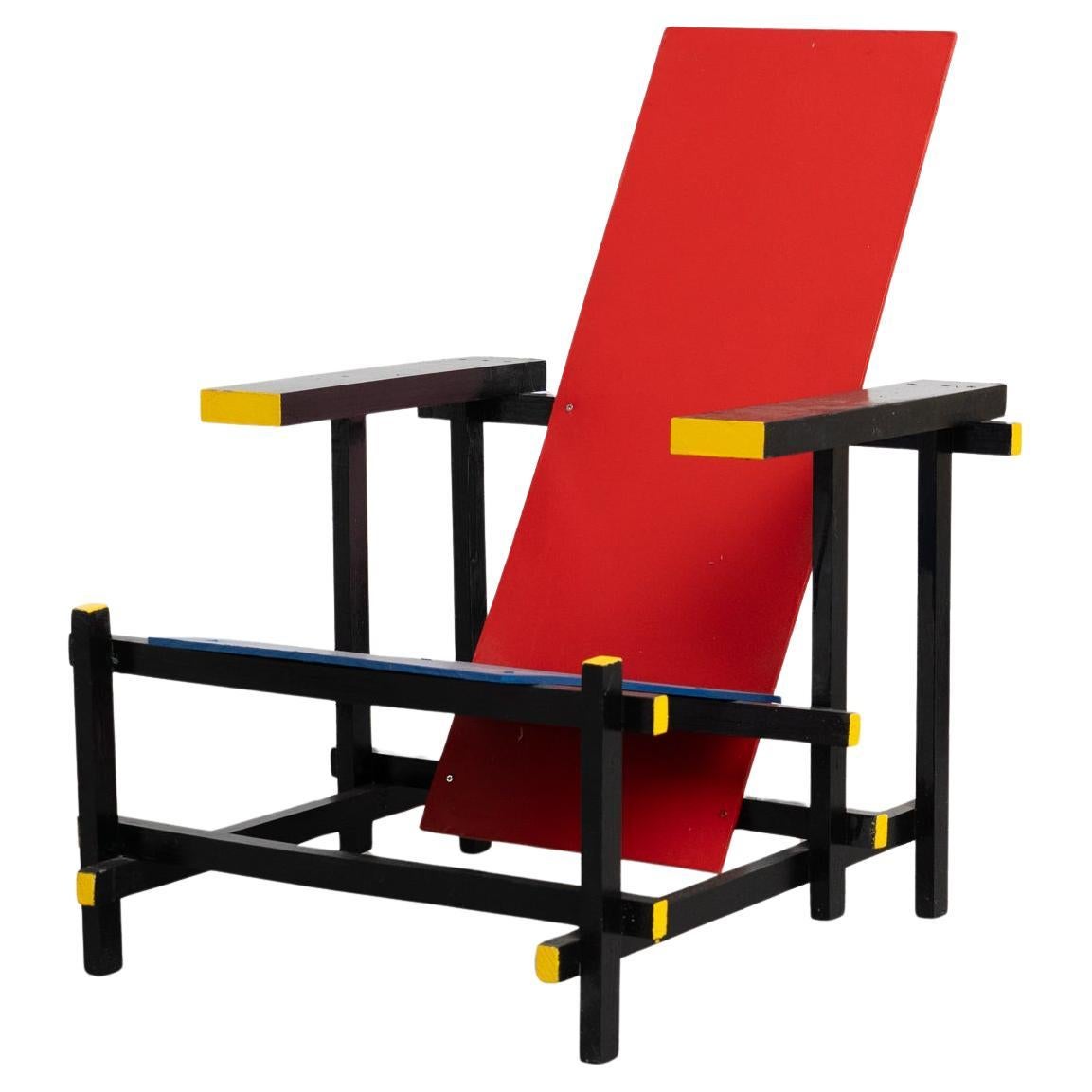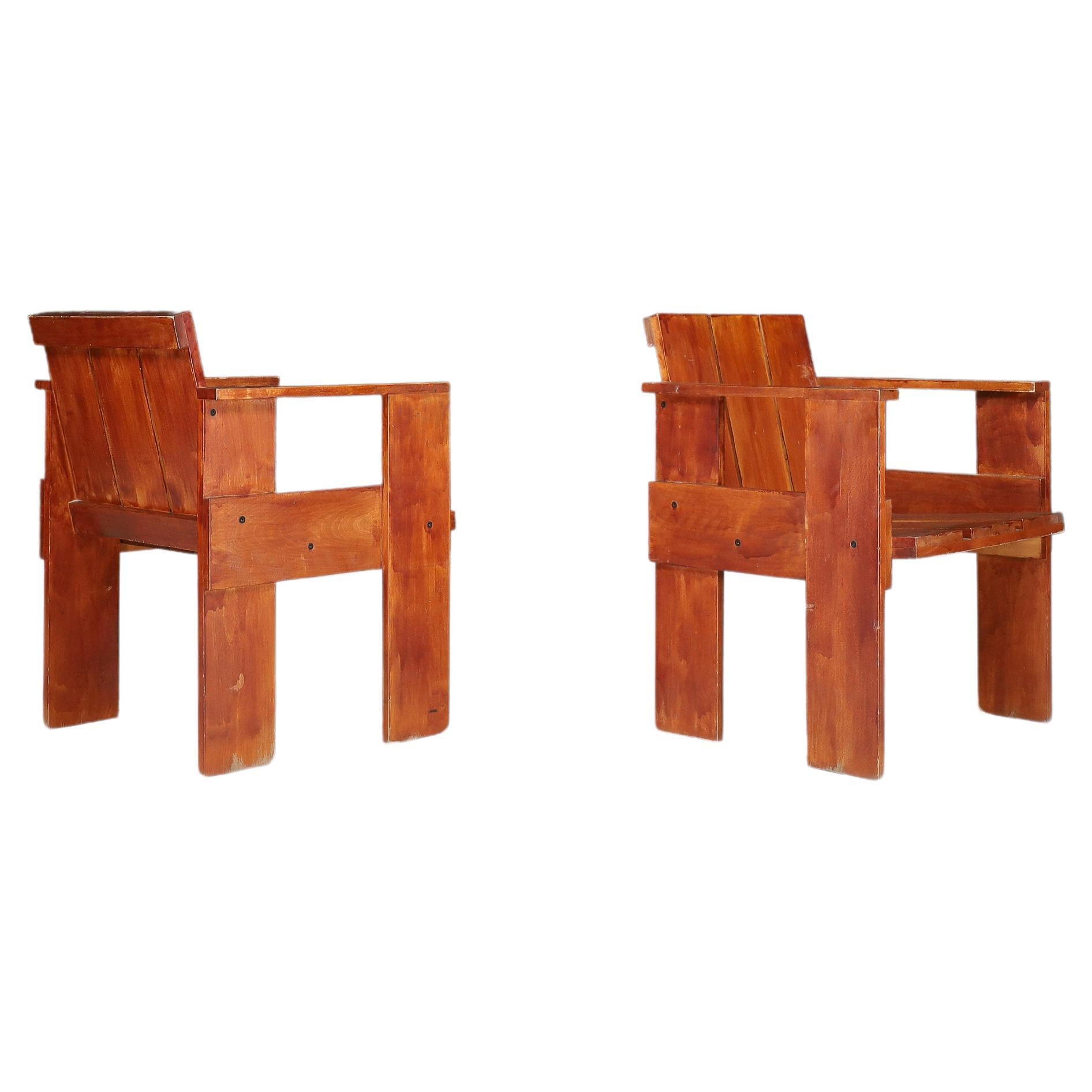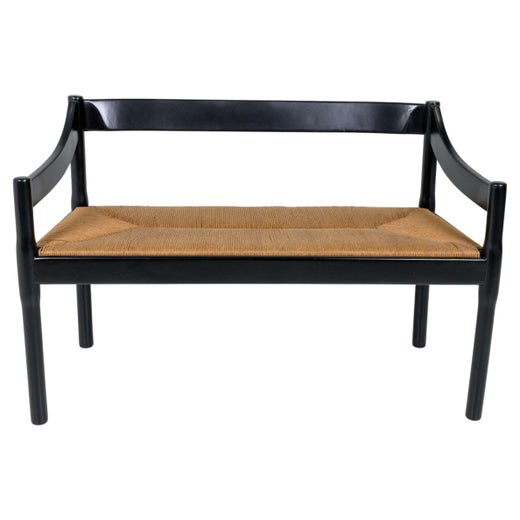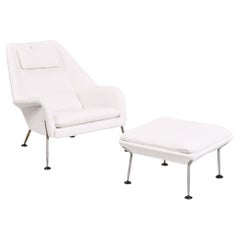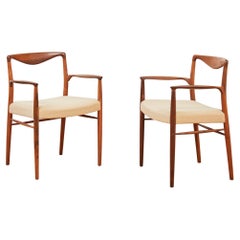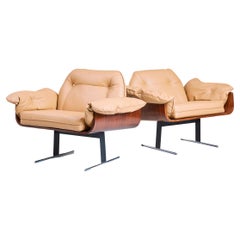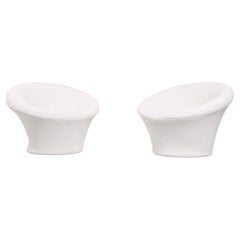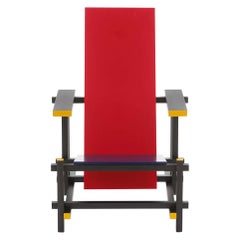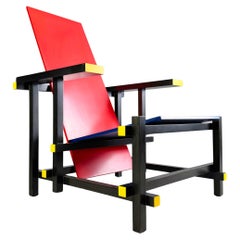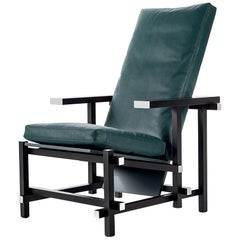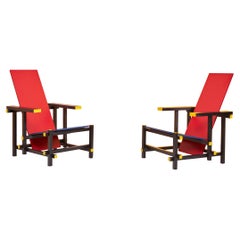
Pair of Gerrit Rietveld 'Red and Blue Chair'
View Similar Items
Pair of Gerrit Rietveld 'Red and Blue Chair'
About the Item
- Creator:Cassina (Manufacturer),Gerrit Rietveld (Designer)
- Dimensions:Height: 34.65 in (88 cm)Width: 25.79 in (65.5 cm)Depth: 32.68 in (83 cm)Seat Height: 13 in (33 cm)
- Style:Modern (Of the Period)
- Materials and Techniques:
- Place of Origin:
- Period:
- Date of Manufacture:1980s
- Condition:Wear consistent with age and use. Very good condition. Structurally solid and sturdy. Only one small mark to the lacquer on one of the seat, and a slight lifting of the lacquer on the same seat (all as pictured). Otherwise in near perfect.
- Seller Location:London, GB
- Reference Number:1stDibs: LU6321231215502
Gerrit Rietveld
Best known for his Red and Blue chair, a modernist icon created using only two plywood plates and 15 connecting bars, Dutch designer Gerrit Thomas Rietveld trained as a cabinetmaker, and his bold vision for furniture was supported by his expertise in construction and craftsmanship.
Born in Utrecht, Rietveld learned goldsmithing in addition to the cabinetry apprenticeship he had in his carpenter father’s workshop. He studied draftsmanship with architect Piet Klaarhamer at the Utrecht Museum of Applied Arts and opened his own furniture workshop in 1917. In the 1930s, Rietveld began to experiment with then-unusual materials like plywood and aluminum, and he pursued intellectual concepts through his design, even considering a seat as a resting place for the body and the soul.
Designed in 1918, the minimalist Red and Blue chair is widely coveted by collectors and gained admirers in the likes of legendary American sculptor and designer Donald Judd over the years. (Examples of Rietveld’s designs can be found in Judd’s restored home-museum in New York City.) The Red and Blue chair is so stunning in its geometric simplicity that it is one of the most important symbols of the Dutch art and design movement of the early 20th century called De Stijl, of which Rietveld was an important part. De Stijl means “the Style” and was an effort to express utopian values through pure abstraction in design and the use of primary colors.
Another example of Rietveld’s celebrated seating furniture is the Zig-Zag chair, which was commissioned by the Dutch department store Metz & Co. and intended to be mass-produced. The resulting design — to which the rights to manufacture were bought by Cassina in 1971 — is the essence of the De Stijl movement and an example of Rietveld’s experiments with jointless chairs made from a single material, wood. The Zig-Zag chair’s armless, legless, elegant form is pure abstraction, yet it is also sturdy and comfortable.
Later in his career, Rietveld worked more often as an architect, designing buildings in prestigious settings like the Venice Biennale. He was a pioneer in more ways than one: The first building he designed, Rietveld Schröder House in Utrecht in 1924, is a radically modern space and has been a UNESCO World Heritage Site since 2000.
Find vintage Gerrit Rietveld furniture on 1stDibs.
Cassina
Furniture manufacturer Cassina is a prolific design house for more reasons than one: It not only owns the licenses to an exquisite collection of iconic chairs, sofas, tables and other pieces from the 20th and 21st centuries but also produces original works that are characterized by innovation and the finest Italian craftsmanship.
Cassina’s illustrious legacy includes being one of the first companies to bring industrial design to Italy in the 1950s. Founded in 1927 in Meda, Italy, by brothers Cesare and Umberto Cassina, the Italian manufacturing giant originally specialized in bespoke woodworking. In nearly a century since its founding, the company has shown incredible foresight about design trends and the evolution of technology.
In 1964, Cassina signed an exclusive licensing agreement to manufacture furniture by Le Corbusier and his collaborators — such as the LC4 chaise longue made with trailblazing French modernist Charlotte Perriand and Pierre Jeanneret — a move that would shape the future of the company. Cassina’s I Maestri collection is an ongoing initiative to restyle landmark designs from the 20th century, such as pieces by Gerrit Rietveld (the Red and Blue armchair from 1918), Charles Rennie Mackintosh, Erik Gunnar Asplund, Franco Albini and Frank Lloyd Wright. The company preserves the intentions and original styles of their designs but adds updated techniques, materials and processes — rendering them the best possible combination of past, present and future. The brand has also worked with contemporary icons like Zaha Hadid, Gio Ponti and Philippe Starck.
Cassina’s original designs are cutting-edge as well. They include pieces for everyday use, the development of which is guided by comfort and the marriage of Italian craftsmanship with industrial technology.
Some of Cassina’s pieces, both from its contemporary and I Maestri collections, can be found in the collections of museums like the Museum of Modern Art and the Vitra Design Museum. In 2014, the company became part of Haworth in its acquisition of Italian furniture group Poltrona Frau, and in 2015, Spanish designer Patricia Urquiola joined Cassina as its art director, leading the brand into its next century of inventive style.
Find a collection of new and vintage Cassina furniture on 1stDibs.
More From This Seller
View AllVintage 1950s British Mid-Century Modern Lounge Chairs
Steel
Vintage 1950s Danish Scandinavian Modern Armchairs
Rosewood
Vintage 1960s Brazilian Mid-Century Modern Lounge Chairs
Leather, Bentwood
Vintage 1980s Dutch Mid-Century Modern Lounge Chairs
Wool, Foam, Plywood
Vintage 1950s Danish Mid-Century Modern Lounge Chairs
Steel, Chrome
Vintage 1930s Austrian Art Deco Dining Room Chairs
Rattan, Beech
You May Also Like
2010s Italian Mid-Century Modern Armchairs
Wood
21st Century and Contemporary Italian Chairs
Wood
1990s Italian Bauhaus Armchairs
Beech, Birch
2010s Italian Mid-Century Modern Armchairs
Leather, Wood
2010s Italian Mid-Century Modern Armchairs
Leather, Wood
2010s Italian Mid-Century Modern Armchairs
Leather, Wood
Recently Viewed
View AllRead More
The 21 Most Popular Mid-Century Modern Chairs
You know the designs, now get the stories about how they came to be.
Billy Cotton Layers His Interiors with Lived-In Comfort
The Brooklyn-based designer is adept at styles ranging from austere to over-the-top, espousing an architectural, detail-oriented approach also evident in his line of furniture and lighting.

